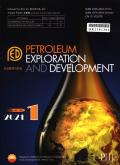Connotation, pathways, and significance of building China into an “energy powerhouse”;
IF 8
Q1 ENERGY & FUELS
引用次数: 0
Abstract
By summarizing the characteristics of the global energy structure and China's energy resource endowment, this study analyzes the historical context and opportunities for China to build an “energy powerhouse”;, and proposes pathways and measures for its realization. It is indicated that the energy resource endowment in China is characterized by abundant coal, limited oil and gas, and vast renewable potential, coupled with an energy consumption structure characterized by high coal consumption, low oil and gas consumption, and rapidly growing renewable energy use. The “whole-energy system”; approach that integrates multi-energy complementarity, green development, stable supply, smart utilization and carbon neutrality is an effective solution to addressing energy transition and energy independence. To build an “energy powerhouse”;, China can follow the approach of the steady and orderly low-carbon development of fossil fuels, the safe and scaled development of new energy, the integrated development of a carbon-neutral “whole-energy system”;, and the shared development of the “Belt and Road”; energy corridor. The construction of an “energy powerhouse”; should follow a “three-phase”; strategic pathway: from 2025 to 2030, achieving peak primary energy consumption and “carbon peaking”;; from 2031 to 2050, energy production will achieve parity with consumption for the first time, striving for “energy independence”;; and from 2051 to 2060, aiming for “carbon neutrality”;, and establishing an “energy powerhouse”;. Building an “energy powerhouse”; will fundamentally safeguard national energy security, advance the achievement of carbon neutrality goals, provide Chinese solutions for global energy transition and green Earth construction, and support the modernization and great rejuvenation of the Chinese nation.
建设“能源强国”的内涵、路径与意义
本研究通过总结全球能源结构和中国能源资源禀赋的特点,分析中国建设“能源强国”的历史背景和机遇,并提出实现“能源强国”的路径和措施。研究表明,中国能源资源禀赋具有煤炭资源丰富、油气资源有限、可再生能源潜力巨大的特点,同时具有高煤耗、低油气消耗、可再生能源利用快速增长的能源消费结构。“全能量系统”;多种能源互补、绿色发展、稳定供应、智慧利用、碳中和相结合的道路,是实现能源转型和能源自主的有效途径。建设“能源强国”,可以坚持化石燃料稳定有序低碳发展,新能源安全规模化发展,碳中和“全能源体系”一体化发展,共建“一带一路”共享发展;能源走廊。建设“能源强国”;应该遵循一个“三相”;战略路径:2025年至2030年,实现一次能源消费峰值和“碳峰值”;2031年至2050年,首次实现能源生产与消费对等,实现“能源独立”;从2051年到2060年,以“碳中和”为目标,建立“能源强国”;建设“能源强国”;将从根本上维护国家能源安全,推进碳中和目标的实现,为全球能源转型和绿色地球建设提供中国方案,支持中华民族现代化建设和伟大复兴。
本文章由计算机程序翻译,如有差异,请以英文原文为准。
求助全文
约1分钟内获得全文
求助全文

 求助内容:
求助内容: 应助结果提醒方式:
应助结果提醒方式:


